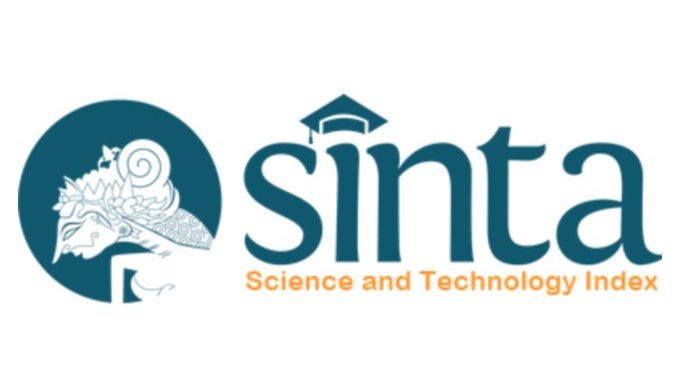Prevalence and Characteristics of Penile Cancer in Karangasem Regency, Indonesia, 2020-2022
DOI:
https://doi.org/10.55175/cdk.v51i5.1055Keywords:
Characteristics, penile cancer, prevalence, squamous cell carcinomaAbstract
Background: Indonesia reported 1,143 penile carcinoma cases from 2004 to 2013. Bali reported the highest age-standardized incidence rate (ASR) in 2004-2013. Method: A quantitative descriptive retrospective study was conducted at Karangasem General Hospital and Balimed Karangasem Hospital. Results: This study involved 29 patients diagnosed with penile cancer in 2020-2022. The highest number of cases was found in 2020. Most cases were in the 60-69 year age-group (34.5%), with a low educational level (75.9%), a smoking habit (75.9%), no history of circumcision (100%), and squamous cell carcinoma (86.2%). The treatment was mainly partial penectomy (41.3%). Conclusion: The study found that the highest prevalence of penile cancer was 6.02 per 100,000 people in 2020.
Downloads
References
Siegel RL, Miller KD, Jemal A. Cancer statistics 2019. CA Cancer J Clin. 2019;69(1):7-34.
Giona S. The epidemiology of penile cancer. Urologic Cancers [Internet]. 2022. Available from: https://www.ncbi.nlm.nih.gov/books/NBK585980/.
Siegel RL, Miller KD, Fuchs HE, Jemal A. Cancer statistics 2021. CA Cancer J Clin. 2021;71(1):7-33.
Iorga L, Marcu RD, Diaconu CC, Stanescu AMA, Stoian AP, Mischianu DLD, et al. Penile carcinoma and HPV infection. Exp Ther Med. 2020;20(1):91-6.
Lestari DPO, Riasa INP, Niramayah PKI, Armerinayanti NW, Cahyawati PN, Sari K, et al. The burden of penile cancer in Bali compared to other provinces in Indonesia: Penile cancer. Open Access Macedon J Med Sci. 2021;9(E):1273-8.
Ribera-Cortada I, Guerrero-Pineda J, Trias I, Veloza L, Garcia A, Marimon L, et al. Pathogenesis of penile squamous cell carcinoma: Molecular update and systematic review. Internat J Mol Sc. 2021;23(1):251.
Zamzami Z. Characteristic of penile cancer and the management in Arifin Achmad Regional General Hospital, Riau, Indonesia. SEA J Med Sci. 2019;3(1):01-03.
Emmanuel A, Nettleton J, Watkin N, Berney DM. The molecular pathogenesis of penile carcinoma—current developments and understanding. Virchows Arch. 2019;475:397-405.
Teddy H, Yudiana IW, Oka AAG. Karakteristik pasien karsinoma penis di Rumah Sakit Sanglah Tahun 2014. Medicina 2018;49(2):48-51.
Yu YB, Wang YH, Yang XC, Zhao Y, Wang ML, Liang Y, et al, The relationship between human papillomavirus and penile cancer over the past decade: A systematic review and meta-analysis. Asian J Androl. 2019;21(4):375.
Tanaka K, Kandori S, Nitta S, Chihara I, Kojo K, Nagumo Y, et al. Characteristics of penile cancer in Japan: An analysis of nationwide hospital-based cancer registry data. International J Urol. 2020;27(6):538-42.
Zhan X, Chen L, Jiang M, Fu B. Get insight into the cause of death distribution and epidemiology of penile squamous cell carcinoma: A populationbased study. Cancer Medicine 2022;11(11):2308-19.
Afonso LA, Carestiato FN, Ornellas AA, Ornellas P, Rocha WM, Cordeiro TI, et al. Human papillomavirus, Epstein-Barr virus, and methylation status of p16ink4a in penile cancer. J Med Virol. 2017;89(10):1837-43.
Kusumajaya C, Safriadi F. Characteristics of penile cancer at tertiary centre hospital: A nine years study from 2010-2019. Indon J Cancer 2022;16(1):28-32.
Santana AGN, Silva GEB, Nascimento JRS, do Nascimento FSMS, Júnior AALT, Silva RC, et al. Epidemiology of penile cancer from the 20th to the 21st century: A literature review. AME Med J. 2023;8:15.
Vieira CB, Feitoza L, Pinho J, Teixeira-Júnior A, Lages J, Calixto J, et al. Profile of patients with penile cancer in the region with the highest worldwide incidence. Scient Rep. 2020;10(1):2965.
Firmansyah F, Prapiska FF, Siregar GP, Kadar DD, Warli SM. Evaluation of health-related quality of life in patients receiving treatment for penile cancer: A single-center cross-sectional study. APJCP. 2023;24(4):1367.
Junior IWJ, Darmawan R, Aryawangsa D, Palguna AS, Prahasari N, Oka AAG. Circumcision in Bali - a survey of knowledge and attitude of Balinese parents toward their son’s circumcision in elementary school Denpasar, Bali. Bali Med J. 2022;11(3):1910-4.
Martins VDCA, Cunha I, Figliuolo G, de Melo Farah Rondon HH, de Souza PM, Silva FLT, et al. Presence of HPV with overexpression of p16INK4a protein and EBV infection in penile cancer—a series of cases from Brazil Amazon. PloS One 2020;15(5):e0232474.
Kristiansen S, Bjartling C, Svensson A, Forslund O, Torbrand C. Penile intraepithelial neoplasia, penile cancer precursors and human papillomavirus prevalence in symptomatic preputium: A cross-sectional study of 351 circumcised men in Sweden. BJU Internat. 2021;127(4):428-34.
Alzubaidi AN, Hahn AE, Gellhaus PT, Erickson BA. Circumcision, buried penis and obesity in a contemporary cohort of patients with penile cancer. Urology Pract. 2019;6(4):243-8.
Sanchez DF, Fernandez-Nestosa MJ, Canete-Portillo S, Cubilla AL. Evolving insights into penile cancer pathology and the eighth edition of the AJCC TNM staging system. Urol Oncol. 2022;40(6):215-22.
Sali AP, Menon S, Prakash G, Murthy V, Bakshi G, Mahantshetty U, et al. Histopathological risk scoring system as a tool for predicting lymph nodal metastasis in penile squamous cell carcinoma. Pathology 2019;51(7):696-704.
Wenzel M, Siron N, Colla Ruvolo C, Nocera L, Wurnschimmel C, Tian Z, et al. Temporal trends, tumor characteristics and stage-specific survival in penile non-squamous cell carcinoma vs. squamous cell carcinoma. Cancer Causes Control 2022;33(1):25-5.
Manjunath A, Brenton T, Wylie S, Corbishley CM, Watkin NA. Topical therapy for non-invasive penile cancer (Tis)—updated results and toxicity. Translat Androl Urol. 2017;6(5):803.
Tang DH, Yan S, Ottenhof SR, Draeger D, Baumgarten AS, Chipollini J, et al. Laser ablation as monotherapy for penile squamous cell carcinoma: A multi-center cohort analysis. Urol Oncol. 2018;36(4):147-52.
Chadha J, Chahoud J, Spiess PE. An update on treatment of penile cancer. Therapeut Adv Med Oncol. 2022;14:17588359221127254.
Whyte E, Sutcliffe A, Keegan P, Clifford T, Matu J, Shannon OM, et al. Effects of partial penectomy for penile cancer on sexual function: A systematic review. PLoS One 2022;17(9):e0274914.
Sansalone S, Silvani M, Leonardi R, Vespasiani G, Iacovelli V. Sexual outcomes after partial penectomy for penile cancer: Results from a multiinstitutional study. Asian J Androl. 2017;19(1):57.
Tranggono U, Umbas R. Karakteristik dan terapi penderita keganasan penis di RS Cipto Mangunkusumo dan RS Kanker Dharmais. Indones J Cancer. 2008;2:45–50.
Downloads
Published
How to Cite
Issue
Section
License
Copyright (c) 2024 I Putu Adi Kurniawan, I Made Suyandnya

This work is licensed under a Creative Commons Attribution-NonCommercial 4.0 International License.





















